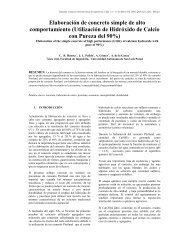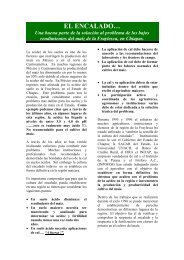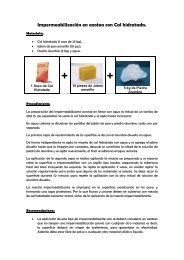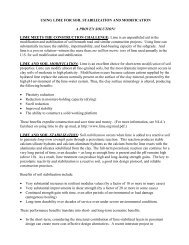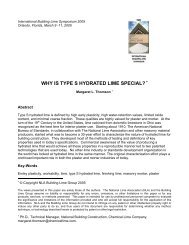Land Contamination: Technical Guidance on Special Sites: Acid Tar ...
Land Contamination: Technical Guidance on Special Sites: Acid Tar ...
Land Contamination: Technical Guidance on Special Sites: Acid Tar ...
You also want an ePaper? Increase the reach of your titles
YUMPU automatically turns print PDFs into web optimized ePapers that Google loves.
6.2.6 Thermal based systems• Thermal based systems can be divided into those utilising thermal desorpti<strong>on</strong> andthose which involve incinerati<strong>on</strong>;• the nature of the c<strong>on</strong>taminati<strong>on</strong> (i.e. the sheer mass of tar) generally means that, forpractical purposes, incinerati<strong>on</strong> is the <strong>on</strong>ly viable thermal based opti<strong>on</strong>.Incinerati<strong>on</strong>• Incinerati<strong>on</strong> is an ex situ treatment that destroys the c<strong>on</strong>taminants by thermaloxidati<strong>on</strong>;• the systems available for remediati<strong>on</strong> include direct fired and indirectly firedincinerators, fluidised bed incinerators and infra red incinerators;• acid tars are likely to require physical pre-treatment (drying) prior to incinerati<strong>on</strong> andthe residue from the incinerati<strong>on</strong> process is likely to require appropriate disposalmeasures;• incinerati<strong>on</strong> has been carried out in the past, and is currently the favoured opti<strong>on</strong> in theUK for treatment of acid tars from refinery processes, with 6,500 of the 8,000 t<strong>on</strong>nesproduced annually in the UK being incinerated;• there are a number of problems associated with this opti<strong>on</strong>, however, as follows:−−−−wide variati<strong>on</strong> in terms of properties of the tar leading to variati<strong>on</strong> in the efficiency ofincinerati<strong>on</strong>;high sulphur c<strong>on</strong>tent of the tar and the resulting need for scrubbers to remove sulphurdioxide from the waste stream;presence of heavy metals, which have strict emissi<strong>on</strong> c<strong>on</strong>trols; andpresence of additi<strong>on</strong>al c<strong>on</strong>taminants in the tar, including physical objects such asbuilding materials (especially bricks) and drums, and neutralising materials such aslime.• Cement kilns have c<strong>on</strong>siderable potential for acid tar incinerati<strong>on</strong> due to the l<strong>on</strong>gresidence time and high temperatures together with their capacity for sulphur dioxideabsorpti<strong>on</strong>. Whilst this technology has been successfully used for this purpose inEurope, in particular in Germany, incinerators/cement kilns are closely c<strong>on</strong>trolledunder the Prescribed Process Regulati<strong>on</strong>s in the UK. An IPC authorisati<strong>on</strong> (in duecourse a PPC c<strong>on</strong>sent) would have to be modified to allow acid tars to be disposed ofat a particular facility. It is unlikely that a commercial incinerator facility would go tothe extent of attempting to modify its authorisati<strong>on</strong> unless a substantial volume ofmaterial was to be provided for disposal.R&D <str<strong>on</strong>g>Technical</str<strong>on</strong>g> Report P5-042/TR/04 38



